African cichlid fish is famous among aquarists due to its coloration and energy. However, tank stocking is a little riddle. This article will solve this puzzle with an equation that counts all necessary parameters. The relationship between rocks and fish is also part of the discussion. Different lights and their impact on coloration make this article worth reading.
Content Table
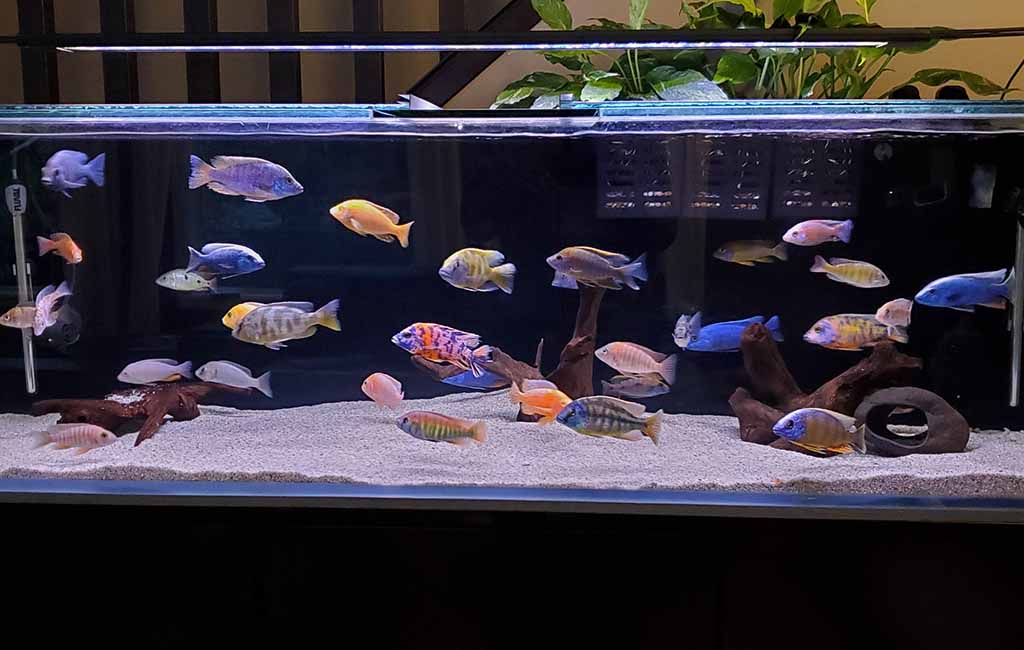
African Cichlid Aquarium
Cichlids are the biggest vertebrate fish families. There are about 3,000 different cichlid species. African and American cichlid species share a big chunk of this vertebrate family. There are about 1,500 different African cichlid species. These species are mostly present in East Africa, i.e., live in the lakes of Malawi, Victoria, and Tanganyika.
Size
The size of African cichlids varies among the species. You can find 1-inch to 1-meter (3 feet) long species with different needs and abilities. Here is a table of various Cichlid species in various sizes.
| Species | Adult Size (inches) |
| Emperor Cichlid | 24-36 |
| Zebra Tilapia | 10-14 |
| Brichardi Cichlid | 3-4 |
| Compressiceps Cichlid | 3-4 |
| Tanganyika Lamprologus | 1.5-2 |
| Kribensis | 4-5 |
| Venustus Cichlid | 10-12 |
| Johanni Cichlid | 3-4 |
| Livingstonii Cichlid | 10-12 |
| Blue Dolphin | 8-10 |
| Mbuna Cichlid | 5 |
| Demasoni Cichlid | 3 |
| Peacock Cichlid | 4-6 |
| Electric Yellow Lab | 3-4 |
| Frontosa | 12 -15 |
| Shell dweller | 1-2 |
Characteristics
- They have a wide range of colors, i.e., blue, red, metallic, yellow, orange, etc.
- Males have more vibrant coloration than females.
- They are super aggressive and terrestrial, especially during breeding and in limited space conditions.
- Their size varies from 1.5 inches, i.e., Neolamprologus multifasciatus, to 36 inches, i.e., Emperor cichlid.
- They have herbivores, omnivores, and carnivores species.
- Males are dominant and responsible for occupying the space and building the nests.
- Numerous African cichlids are mouth breeders. Often, females incubate the eggs until the fry are ready to swim.
- They can live for 5 to 15 years with good care.
- They love to live in alkaline conditions.
- Some species love to live in rocky areas.
- They live in warm water conditions, i.e., 75°F and 82°F.
Cichlid Stocking Calculator
Cichlids are one of the most common aquarist’s choices. It’s a puzzle to calculate the perfect cichlid stocking in the tank. Several aspects affect their stocking density, i.e., species, aggression, rock space, swimming space, adult size, and tank size. The best estimation will count all of these factors.
Here is the Cichlid fish stocking calculator.
Stocking Density
Let’s calculate the stocking density for different cichlid species, i.e., Mbunas, Peacocks, Haps, and Tanganyikan cichlids, for a 55-gallon tank.
| Species | Average Size (inch) | Stocking Factor (inch per gallon) | Fish in the tank |
| Mbuna Cichlids | 5 | 1 | 6 |
| Peacock Cichlids | 5 | 2 | 15 |
| Hap Cichlids | 7 | 2 | 11 |
| Shell Dwellers | 2 | 1 | 20 |
| Julidochromis | 4 | 1 | 10 |
Rocks and African Cichlid Stocking
African cichlids are known for their aggression. Rocks are one of the best solutions to control it. Rocks help to set the territories, provide food, and give a natural look to the tank. However, it’s critical to calculate the ratio of open swimming space and rocks in the tank. Here’s the solution.
Rock and Fish Relation
Usually, three African cichlid species are closely attached to rocks, i.e., Mbuna, Peacock, and Hap cichlids. Rocks occupy about 50 to 75% of Mbuna tanks. Peacock and Hap’s tank has 30 – 50% rock volume, as they are less aggressive and a little calm.
A 50-gallons Case Study
For a better understanding, let’s take an example of a 50-gallon tank for Mbuna, Peacock, and Hap fish.
Here is the simple fish stocking formula.
According to the formula, you can stock five adult Mbuna and 14 Peacock or 10 Hap cichlids in your 50-gallon tank.
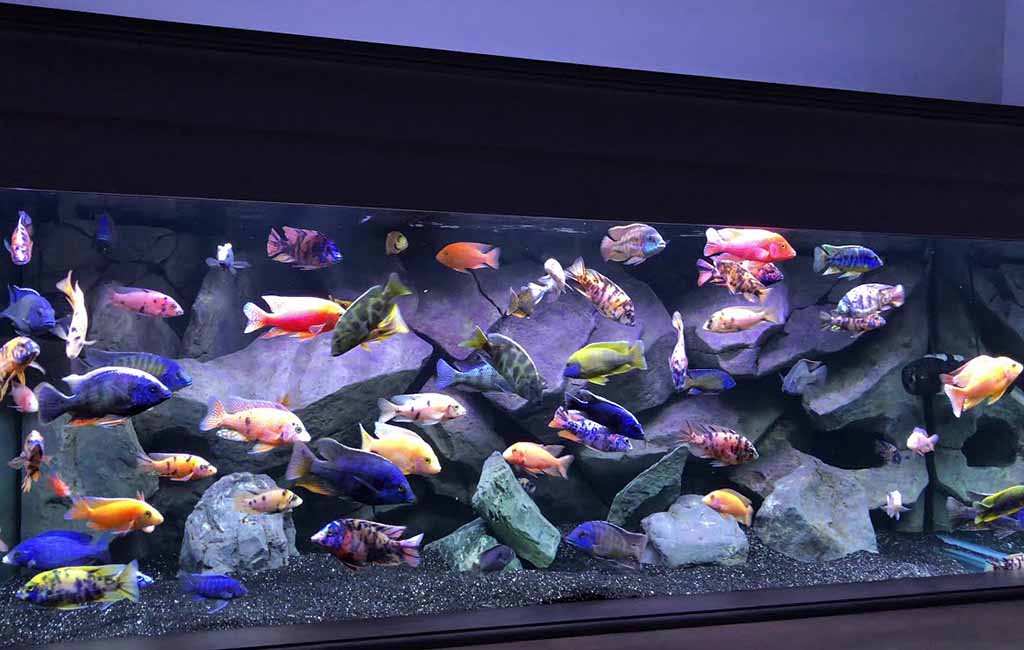
Lamps for Cichlid Fish Tanks
Lights help to maintain the tank ecosystem. Other than essentially, lights help to bring energy and colors to the tank. Here are some lighting options that you can use in your cichlid tank.
Full-Spectrum LEDs
A full spectrum light creates a daylight condition in the tank. These lights highlight the all-blue, yellow, red, and orange species. They are also suitable due to their energy-efficient, long-lasting, and adjustability properties. Full spectrum lights range from 6,500K to 10,000K in color temperature.
Combination of Actinic Blue and White LEDs
If you have deep color cichlid species, i.e., blue, purple, green, etc., in your tank, it is great to install actinic blue lights. These lights highlight their deep coloration. Along with actinic blue light, don’t forget to add white lights to avoid a dark look in your tank.
Combination of Red and White LEDs
If you have some red, yellow, or other matching shade cichlid species, e.g., Red empress, Yellow Labs, etc., red LEDs will highlight them. These LEDs help to intensify their coloration. However, only red lights lead to an artificial look in your tank. Therefore, don’t forget to combine it with white light.
RGB LEDs
RGB LEDs are one of the best lighting options, as these lights offer customization. You can adjust the color according to your fish species.
T5 and T8 Fluorescent Lighting
These lights act as full-spectrum LEDs. They offer a daylight vibe in the tank. Some fluorescent lighting exclusively intensifies the fish coloration. These lights boost the vibration of the tank.
Considerations
There are some considerations that you should remember.
- Use medium-intensity lights, as high intensity can cause stress among the fish.
- Create a proper day-night cycle, i.e., 8–10 hours of light and other maintain darkness.
- Adjust the intensity like a regular day, i.e., low light at dawn and dusk, high between hours, and dark for the night.
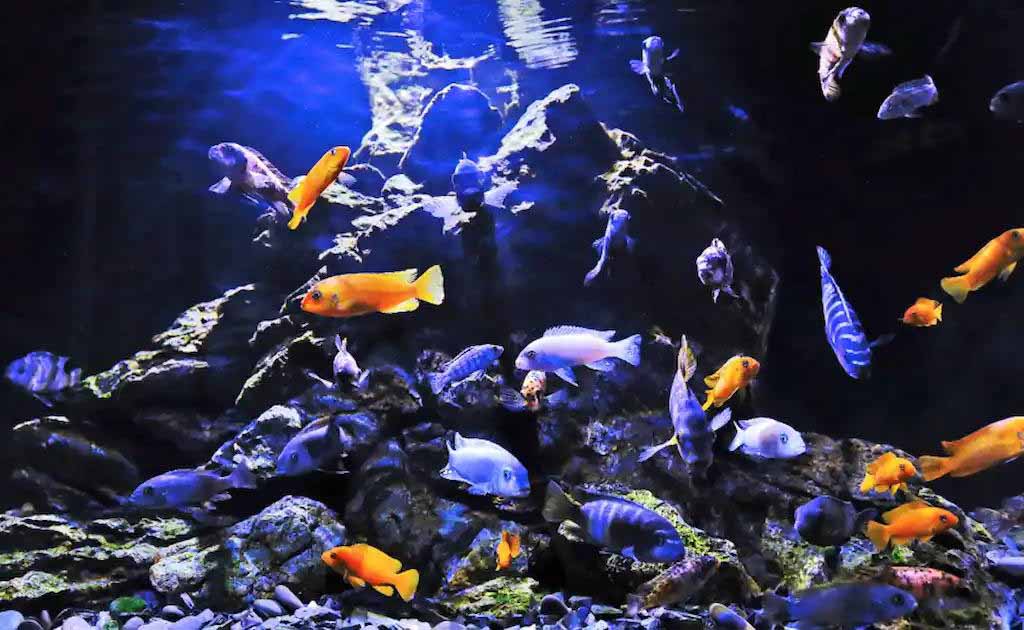
In Closing
African cichlid fish fill any tank with vibrant colors and bring energy. However, stocking is hard as it requires information about various parameters, i.e., species, size, aggression, etc. A Cichlid tank is distinguished for rocks. Stocking becomes easy by counting the size, inch per gallon, free space, and total tank size.
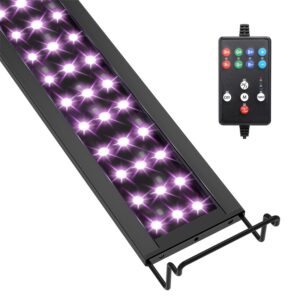
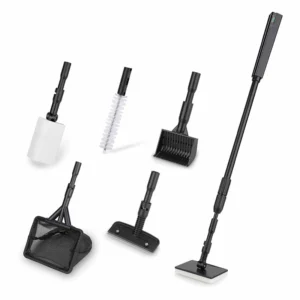
Leave a comment